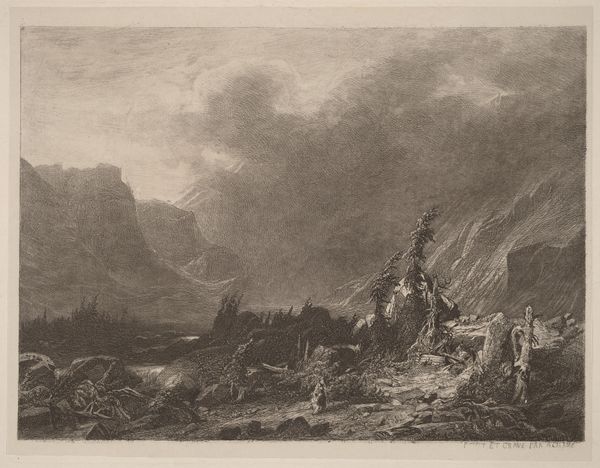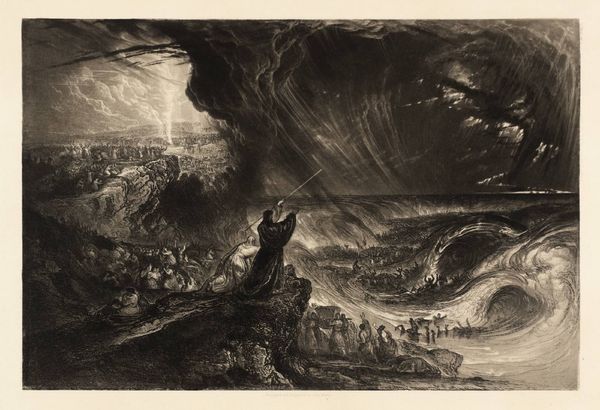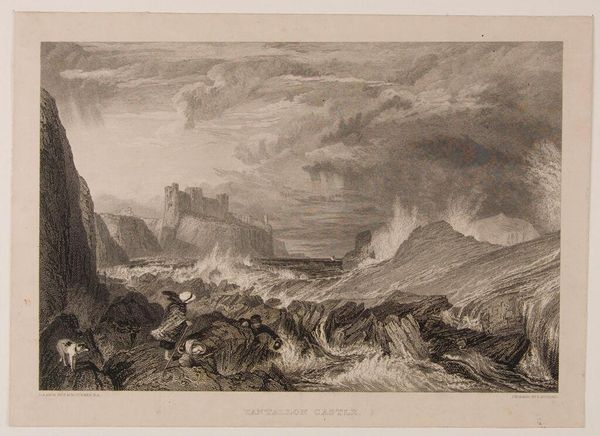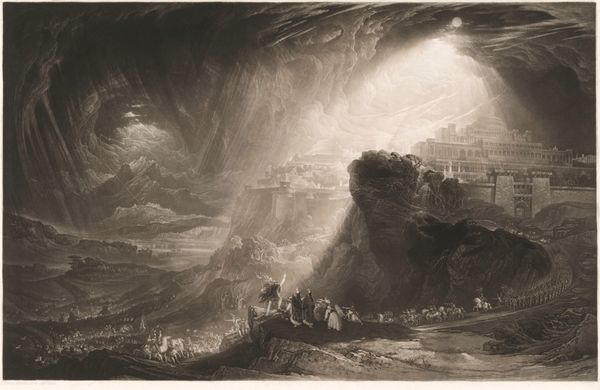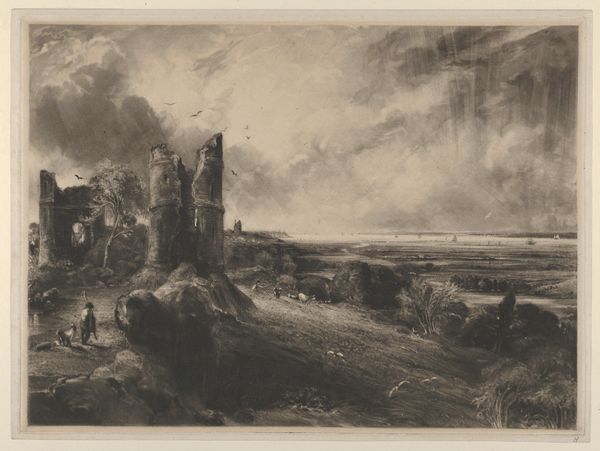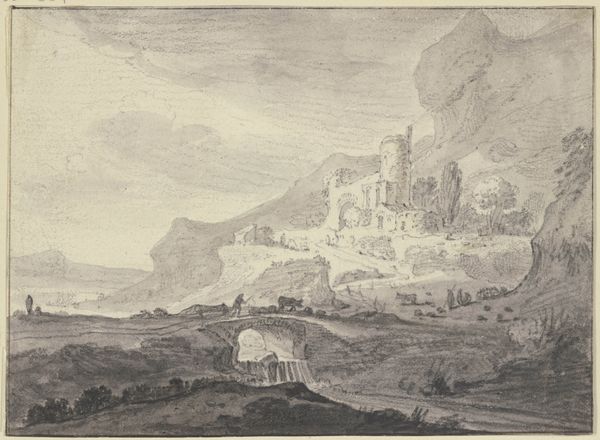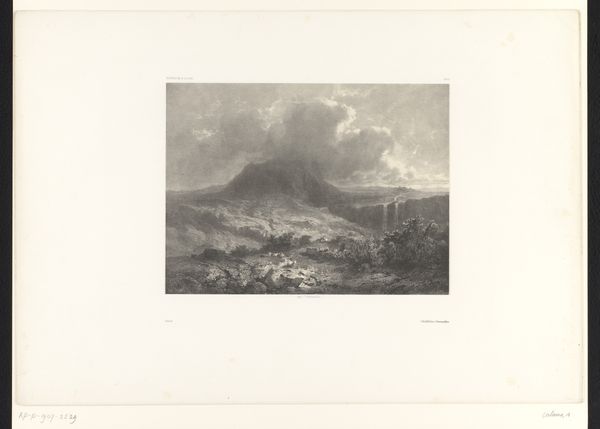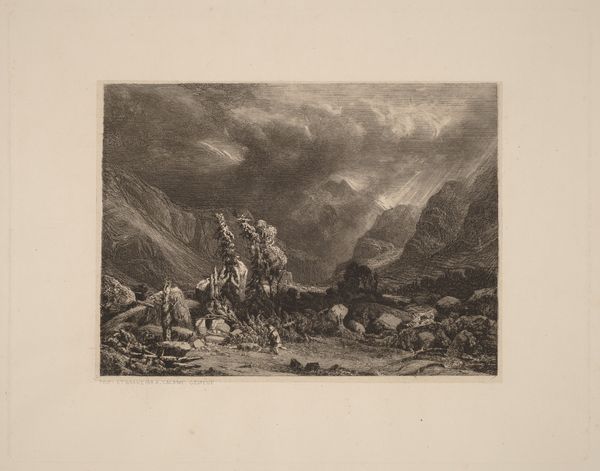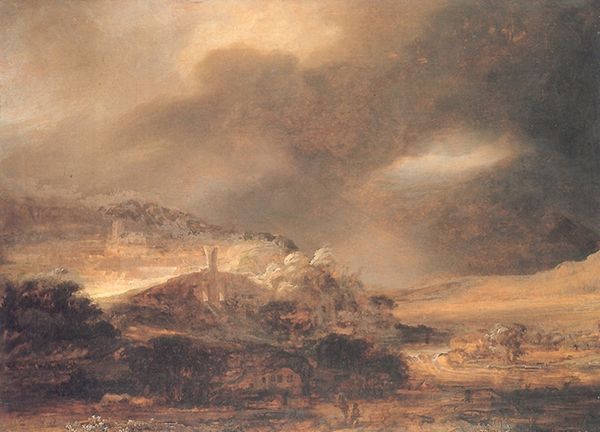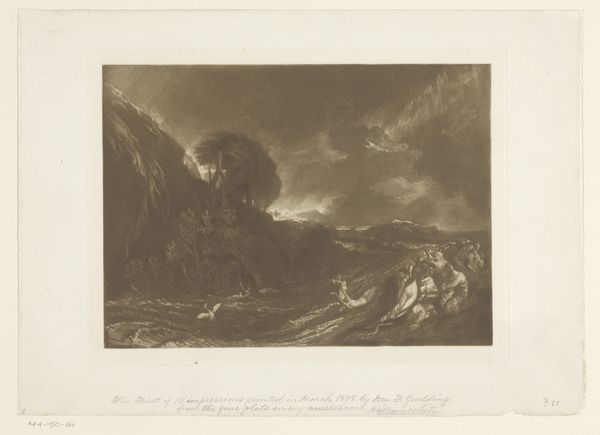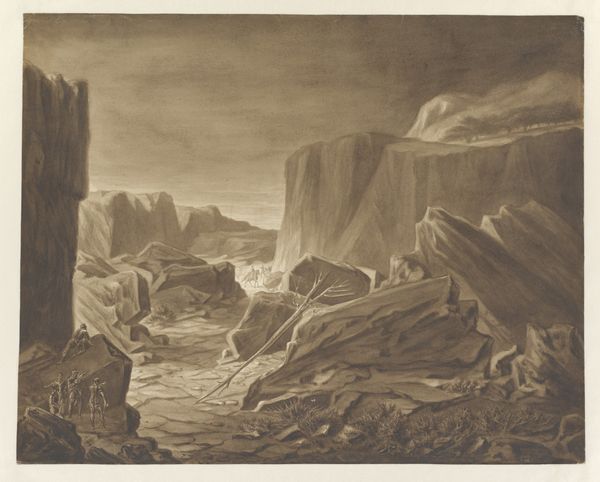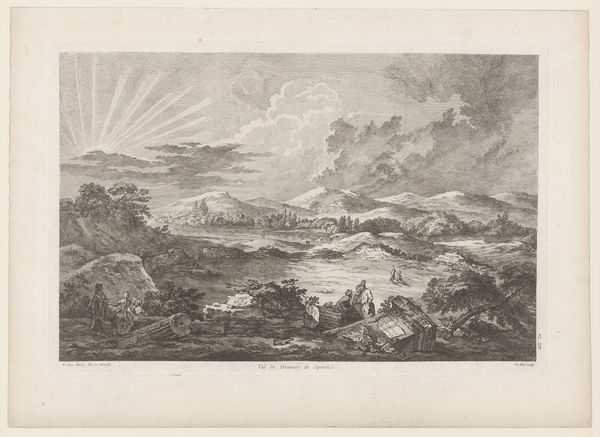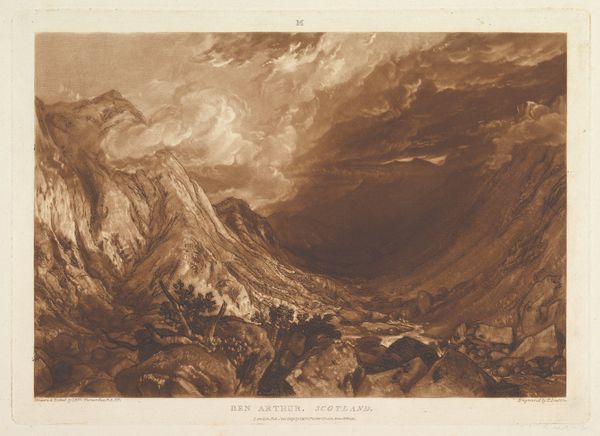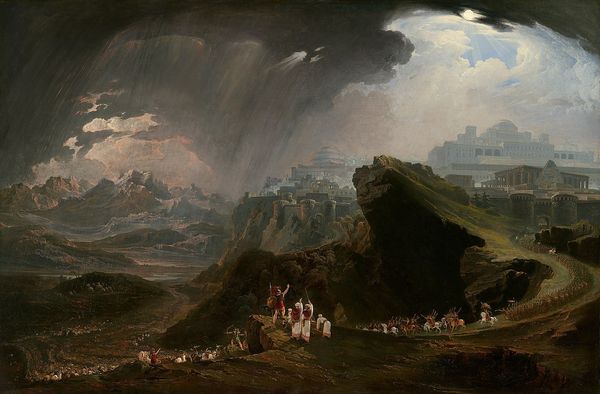
Joshua Commanding the Sun to Stand Still Upon Gibeon (Joshua: 10: 12–14) 1817 - 1827
0:00
0:00
drawing, charcoal
#
drawing
#
narrative-art
#
landscape
#
charcoal drawing
#
figuration
#
romanticism
#
charcoal
#
history-painting
#
academic-art
#
charcoal
Dimensions: sheet: 15 7/8 x 24 in. (40.3 x 61 cm)
Copyright: Public Domain
Curator: Editor: Here we have John Martin's charcoal drawing, "Joshua Commanding the Sun to Stand Still Upon Gibeon," created between 1817 and 1827. It's incredibly dramatic, with this immense landscape dwarfing the figures. What do you make of it? Curator: I see a meticulous rendering of labor embedded within this biblical scene. Consider the sheer effort required to produce such a detailed drawing with charcoal, a relatively humble material. It speaks volumes about Martin’s investment in the act of making. Look closer. What processes do you observe beyond simply applying charcoal to paper? Editor: I can see different densities of charcoal were applied, some areas are much darker than others! It is not *just* a charcoal drawing. I see smudging. The details, though, are so fine for something you can just rub off. How was this even achieved with such simple materials? Curator: Exactly. Now, think about the societal context. During the Industrial Revolution, traditional artistic skills were being challenged. Martin's detailed work could be interpreted as a statement about the value of human skill amidst increasing mechanization. How do you think this narrative reinforces or challenges this view? Editor: That makes sense. Maybe he is commenting on how skilled craftsmanship has a place, even within something like mass warfare, as a means to assert and claim a moral position through physical production? I am still caught up with the level of detail. Curator: Indeed. Consider also the Romantic era's fascination with sublime and awe-inspiring landscapes, but notice how the architecture of Gibeon contrasts with its rugged environment and landscape of laborers, hinting towards power relations and influence through its construction. How can the interplay between art and society be interpreted in this work, specifically when taking material usage and distribution into consideration? Editor: Okay, so we’ve got Martin's deliberate artistic choices combined with that historical context…It’s all really intertwined, isn't it? I'm realizing this drawing tells a different story if we view it from a materials perspective!
Comments
No comments
Be the first to comment and join the conversation on the ultimate creative platform.
